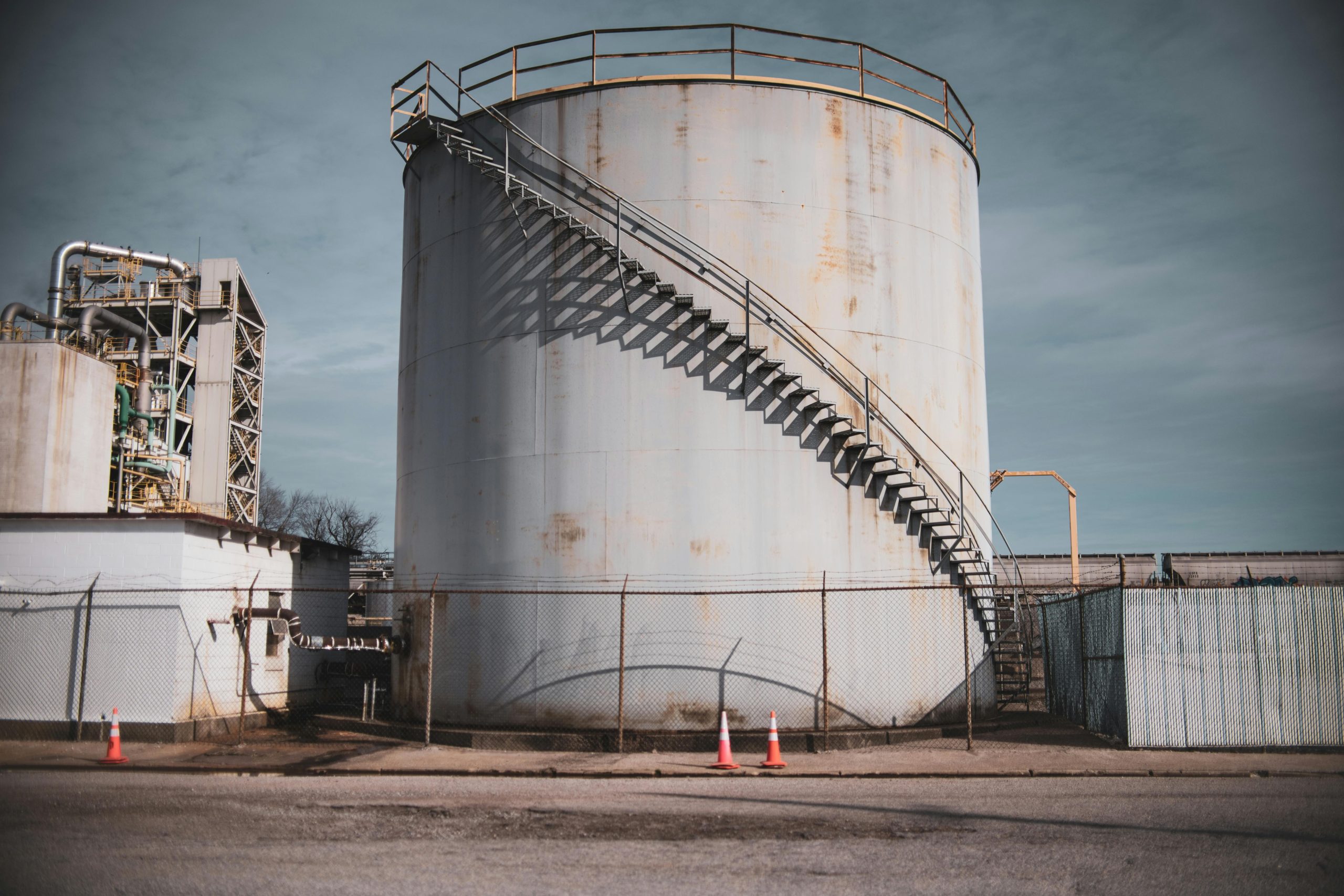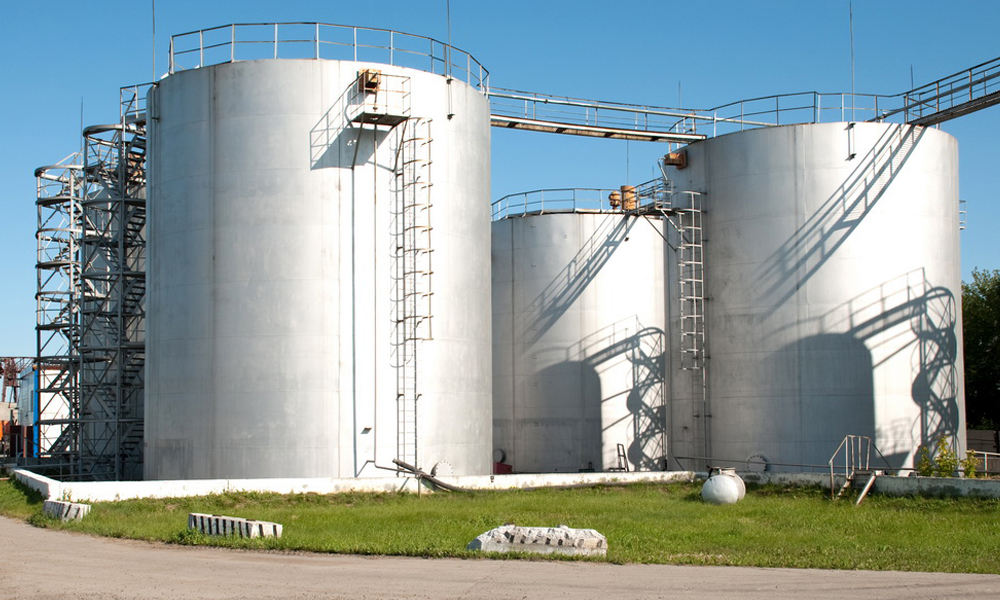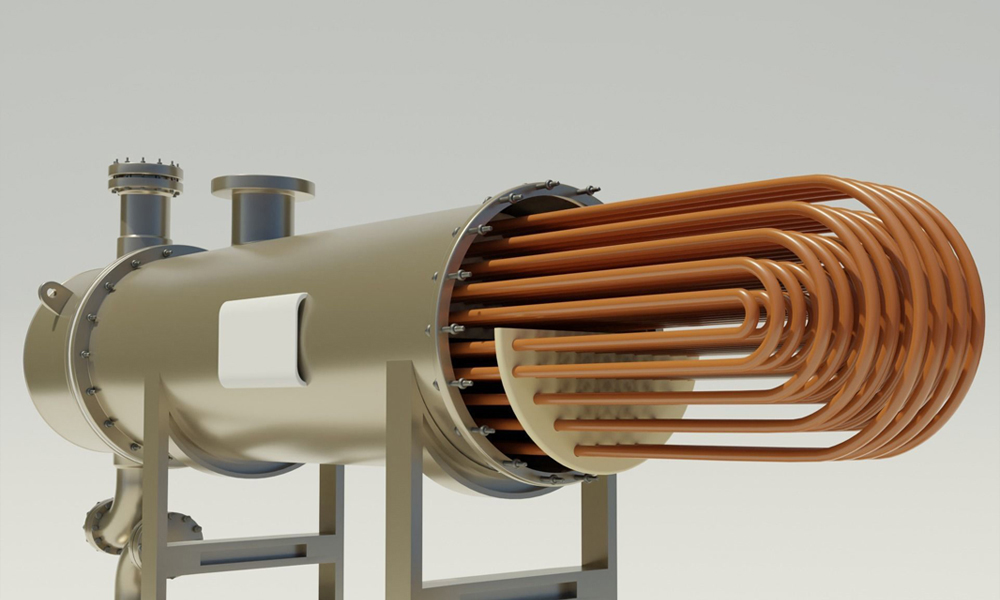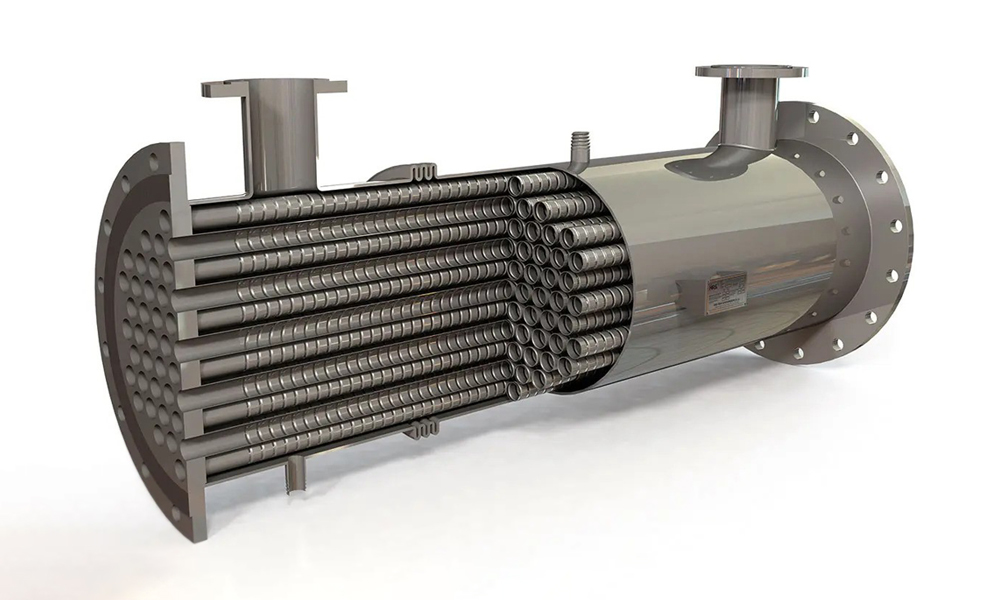A cylindrical pressure vessel is a part of the fixed equipment used in the oil, gas, and petrochemical industries. This vessel is a structure designed for storing and transporting liquids and gases under pressure. These vessels have a cylindrical shape, which is widely used due to their high compatibility with internal pressure and suitable structural strength.
A cylindrical pressure vessel has two closed ends (heads), where typically one end is flat or dished, and the other end is spherical or hemispherical. This design allows the vessel to withstand internal pressure and prevent leakage.

Atmospheric storage tanks are used for storing crude oil, petroleum products, and other fluids at atmospheric pressure. These tanks are utilized in production and processing units as intermediate storage for fluids over a short period and with a specified volume.
Fixed roof tanks, open-top tanks, floating roof tanks, domed roof tanks, and conical roof tanks are among the types of cylindrical storage tanks.
Advantages
Due to the reasonable price of atmospheric storage tanks compared to pressure vessels and their efficiency to store fluids for a short or long time, they are an integral part of refineries or factories producing chemical products.
Disadvantages
Two very important points during the operation of this type of tanks are to prevent the excessive increase of pressure inside the atmospheric tanks and also to prevent the excessive decrease of the pressure inside the tanks and to pay attention to the safety requirements.
Features of a Cylindrical Vessel
Physical Structure of the Cylindrical Vessel: A cylindrical pressure vessel has two closed ends (heads). Typically, one end is flat or dished, while the other end is spherical or hemispherical. This design enables the vessel to withstand internal pressure and prevent leakage.
Also read: The role of the cylindrical tank under pressure in the development of the industry
material of Construction: A cylindrical vessel is usually made of metals such as carbon steel or stainless steel. These metals are used as the primary construction materials due to their mechanical properties and resistance to pressure.
Read more: Selecting the right material for cylindrical tanks
Pressure and Temperature Range: The allowable pressure and temperature range in a cylindrical vessel depends on various factors such as the size, shape, and material of the vessel, the type of liquid or gas contained, and the intended application. However, minimum and maximum limits for pressure and temperature are defined to ensure safety and optimal performance of the cylindrical vessel.
In general, the maximum allowable pressure for a cylindrical vessel is usually around 10,000 pounds per square inch (PSI). This maximum pressure may vary, being higher or lower in some cases—for example, in the oil and gas industry, where higher pressures are common compared to other industries. Likewise, the allowable temperature range for cylindrical vessels is generally between -20°C and 120°C. However, in certain cases, such as in the petrochemical industry, the permissible temperature can be higher than this range.
Types of atmospheric tanks
Cylindrical atmospheric tanks are used to store liquids and chemicals, which are made in different types according to the type of application.
- Open atmospheric tank or atmospheric tanks without a roof: these tanks have been welcomed due to their lower design and construction costs and are mostly used to store water in fire stations or water used for cooling industrial equipment.
- Fixed roof atmospheric tanks: Fixed roof atmospheric tanks are a type of cylindrical tanks whose roofs are welded and they are called fixed roofs. The roof of this type of tank can be flat, domed or conical.
- Domed atmospheric tanks: Domed roof cylindrical tanks are a type of tanks with a fixed roof. Tanks with a domed roof can store materials with a vapor pressure greater than atmospheric but less than that of a spherical or ball-shaped tank.
- Floating Roof Atmospheric Tanks: They are an example of cylindrical tanks that are designed, manufactured and installed by Petrosazeh Beinolmelal Aram Co. These types of tanks are divided into two types of internal and external floating roofs. In this type of tanks, the roof is installed in such a way that it remains on the surface of the floating material and goes up and down when the liquid level changes
Cylindrical Vessel Design
Dimensions and Shape
The dimensions and shape of cylindrical tanks vary depending on their application and specific requirements. Below are some of the common dimensions and structural forms of cylindrical pressure vessels:
- Diameter and Height: The two main dimensions in cylindrical pressure vessels are diameter and height. The diameter refers to the distance between the two heads of the vessel measured horizontally, representing the widest part of the vessel. The height is the vertical distance between the two heads, representing the total length of the vessel.
- Bottom Shape: The bottom shape of the vessel can differ based on operational needs. Common bottom types include flat bottom, dished bottom, and hemispherical bottom.
- Head Shape: The shape of the head or top section of the vessel also depends on its size and intended application. Similar to the bottom, common head types include flat head, dished head, and hemispherical head.
- Wall Thickness: The wall thickness of the vessel is determined by the internal pressure and the material of construction. In some cases, vessels are built with greater wall thickness to minimize the risk of failure and leakage under adverse conditions.
Also read: Design and construction of a cylindrical tank under pressure
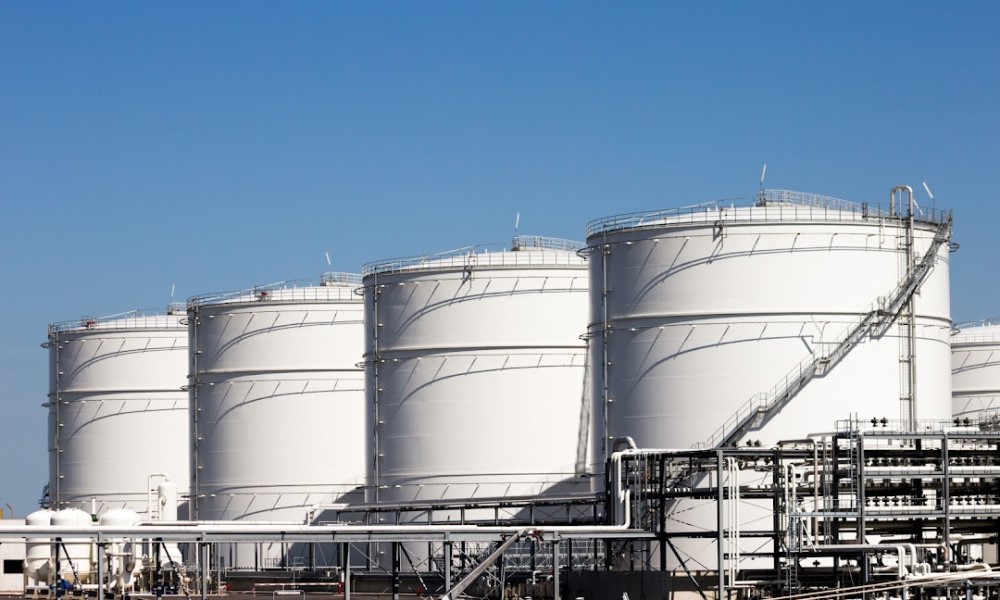
Welding and Connections
Welding and connections in cylindrical vessels are extremely important and play a critical role in the safety and performance of the vessel. Below are some key points regarding welding and connections in cylindrical vessels:
- Type of Weld: The type of weld must be determined based on the construction material of the vessel and its intended application. For example, when carbon steel is used for vessel construction, rutile electrode welding or MIG/MAG welding is suitable.
- Non-Destructive Testing (NDT): After welding, non-destructive tests must be carried out to evaluate weld quality and eliminate any possible defects. These tests include radiographic testing, ultrasonic testing, and magnetic particle testing.
- Brazing: In some cases, instead of welding, brazing is used for joining vessel components. Brazing, due to its lower impact on the mechanical properties of the construction materials, can provide higher structural strength compared to welding in certain applications.
Anti-Corrosion Coating
Anti-corrosion coating in cylindrical vessels is of great importance, as it protects the vessel against corrosion and rust, thereby extending its service life. Below are some common methods of anti-corrosion coating applied to cylindrical vessels:
- Painting: Applying suitable anti-rust paints on the internal and external surfaces of the vessel is a common method. These paints must have resistance to pressure, heat, and chemical substances.
- Electrochemical Plating Methods: In this method, with the use of electrical current and suitable chemical solutions, anti-rust layers are formed on the vessel’s surface. This approach serves as a fundamental technique for corrosion protection.
- Metallic Coatings: Using metallic coatings such as stainless steel on the internal and external surfaces of the vessel provides strong resistance against rust and corrosion.
Why entrust the installation of a cylindrical tank to petrosazeh?
Considering the wide application of this equipment in various industries and not only limited to oil and gas industries; The implementation of similar projects in compliance with domestic and international oil and gas standards has a significant impact on the quality and final output of the work.
Petrosazeh Beinolmelal Aram Co, by complying with all the standards set by the client, commitment to timely implementation of the project, fully complying with the safety principles and relying on the technical knowledge and expertise of its skilled workforce, has so far completed many projects in line with the construction of fixed roof cylindrical tanks and It has implemented a floating roof and has succeeded in obtaining a certificate of good performance from its employers.
Construction of two floating roof cylindrical tanks with a capacity of 500,000 barrels for South Pars, two fixed roof cylindrical tanks for Pasargad Oil Company, nine fixed and floating roof cylindrical tanks for Poldokhter Refinery Unit Tank Farm, three roof cylindrical tanks Fixed and floating Bistoun Petrochemical etc. are among the working experiences of this company to manufacture this product.
Construction of atmospheric tanks
Petrosazeh Beinolmelal aram Co is the operator of all types of fixed oil and gas equipment, pressurized and atmospheric storage tanks. This complex operates the best atmospheric storage tanks in the region by using the expert force and modern knowledge of the world. Call for expert advice on the design, construction and installation of an atmospheric storage tank.

